The California Applicants Attorneys Association winter convention is always one of the largest gatherings in the California workers’ comp industry.
The convention brings together a large number of the prominent applicant attorney firms as well as key stakeholders and policymakers. This year’s conference, held in San Diego, was no exception.
The January 2019 conference came at a time of some uncertainty regarding the direction of California workers’ comp. Governor Newsom has yet to announce his full policy-making team. If Newsom has any workers’ comp reforms or priority issues in mind, it is known only to him and his closest confidants.
One of the things that CAAA does exceedingly well is sponsoring excellent educational panels. I’ve been to scores of CAAA conventions and have to say that the level of preparation and analysis has never been better than this year’s conference.
That’s important, because CAAA’s educational efforts lift the level of lawyering that disabled workers depend on.
Attendees hear from some of the best and brightest attorneys in the field. Recent cases and theories are discussed. Attorneys often leave inspired by what they have heard, and empowered to take approaches that will benefit their worker clients.
Future blog posts will explore many of the primary topics explored during the CAAA panel sessions. But here is a quick snapshot of some of the “hot” topics that were considered:
• “Kite”, which deals with the aftermath of the Kite case handled by my law partner at Boxer & Gerson, Michael Gerson. The issue in Kiteand its progeny is whether impairments must be combined under the CVC chart, or whether and when that can be rebutted and the impairments added;
• “Benson”, which deals with the aftermath of the Benson case. The issue is whether and when an apportionment determination must allocate to separate injuries, and what happens when the disability is caused by “inextricably intertwined” injuries;
• QME panel/QME process problems and strategies to rebut QMEs
• The recent Dynamex case (with its ABC test for employment in a wage and hour context) and the multi-factorial Borello employment test that has been used in workers’ comp for years. Speakers noted that there have been dueling bills introduced in the California legislature that would either expand or extinguish the application of the Dynamex ABC test;
• The likely items that will be the focus of the DWC in 2019. This was presented by current AD George Parisotto and by Chief Judge Paige Levy. Doctor access to the ACOEM guides, a revised system for compensating QMEs, revised UR regulations, DWC access to UR data, further focus on enforcing anti-fraud measures, revision of the RFA form format, walk-thru procedures, district office security concerns, a backup court recording system and developing an EAMS replacement or upgrade were noted as some of the items that are currently being reviewed or may be considered;
• A discussion presented by many of the current WCAB Commissioners (Zalewski, Lowe, Sweeney, Snellings and Deputy Anne Schmitz). This included discussion of reasons for delays at the WCAB (where reconsideration granted for study can lead to lengthy waiting) and analysis of cases involving panel QME disputes;
• Discussion of “The Most Important Cases”, a perennial convention must-see; these cases included a number of cases where CAAA was on the losing end, including Fitzpatrick, Lindh, and King V. Comp Partners;
• A round-table on the current system, the impact of the 2018 election and a new administration featuring CHSWC commissioners Martin Brady (employer-side member) and Doug Bloch (labor-side member) as well as Assembly consultant Mark Rakich, a key figure in legislative matters.
• Medicare set asides and the complexities of how they are shaped by carriers and vendors, and what applicant attorneys should do to protect their clients and themselves;
• The concepts of “direct cause” and “cause”, the difference between medical and vocational apportionment, apportionment to lack of education and language skills, and the ramifications of these issues in cases where permanent total disability is alleged;
• Current ethical issues that arise in handling cases;
• Understanding how burdens of proof affect apportionment and other comp issues
Whatever your stakeholder perspective, the sessions were a worthwhile exploration of issues that will be critical to the California system in the coming months and years.
Stay tuned.
Julius Young




